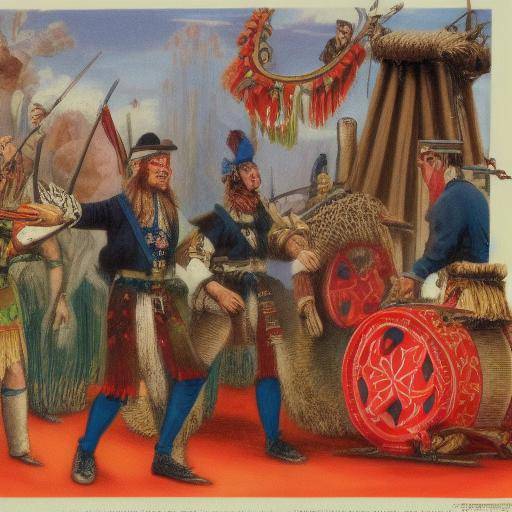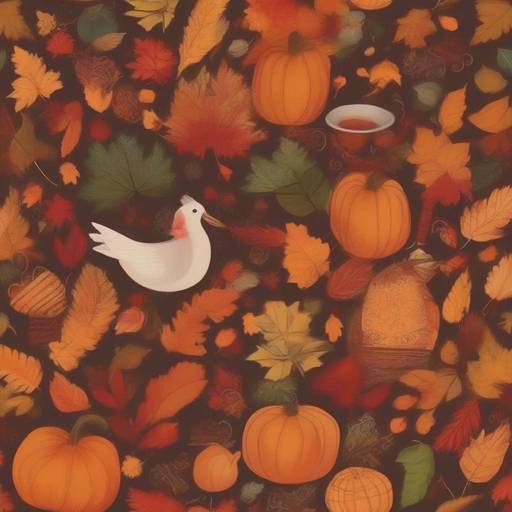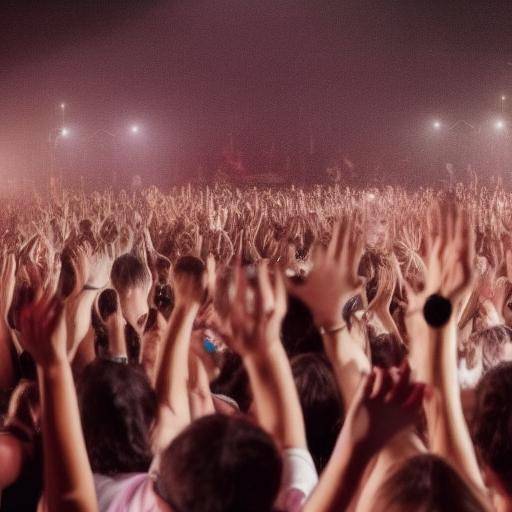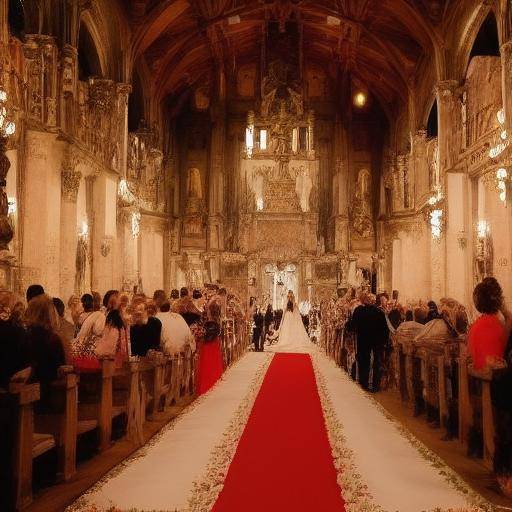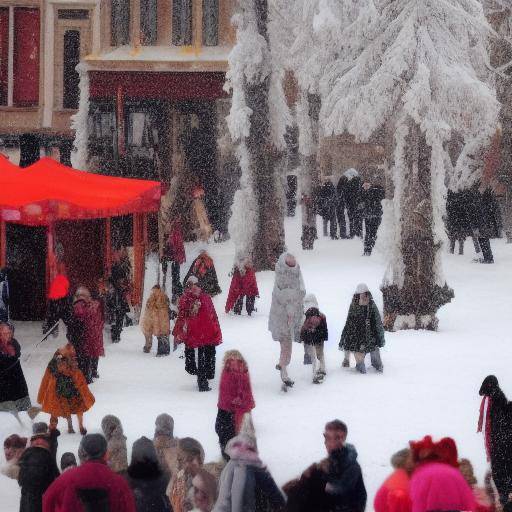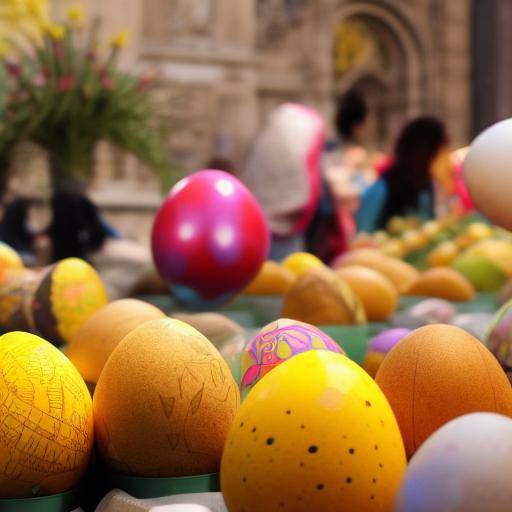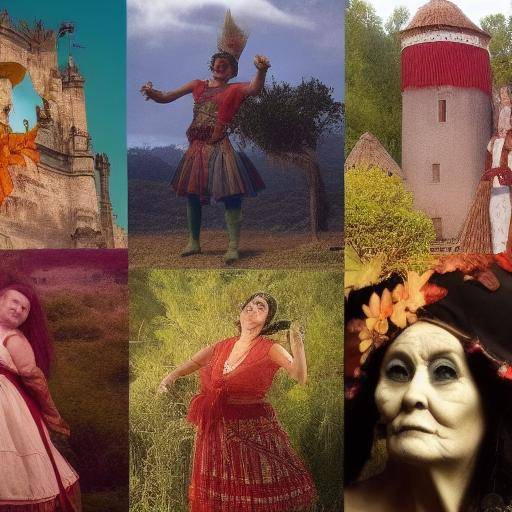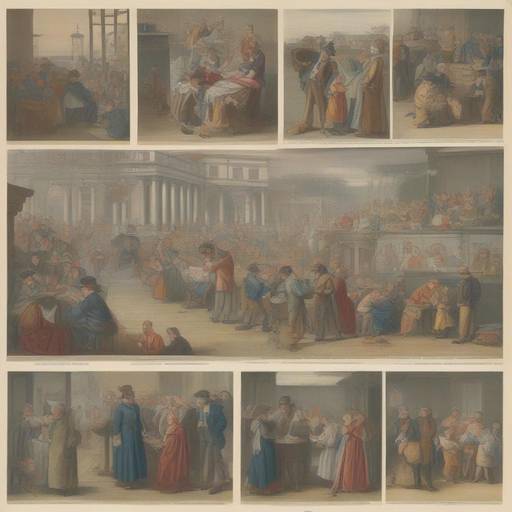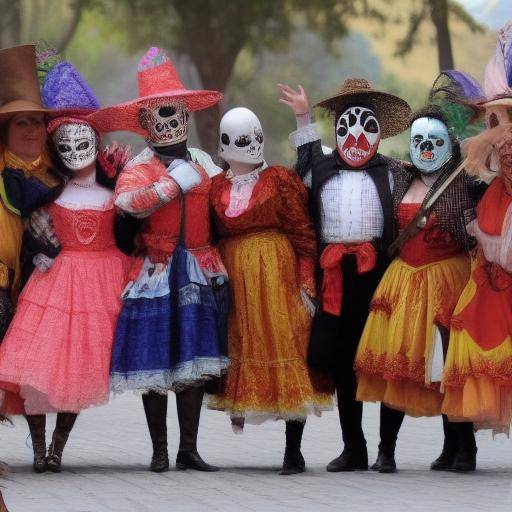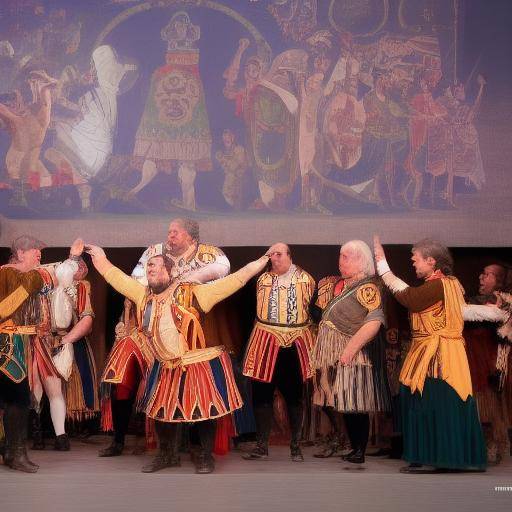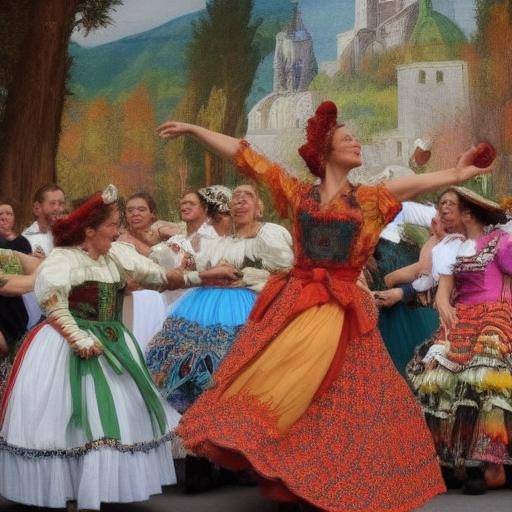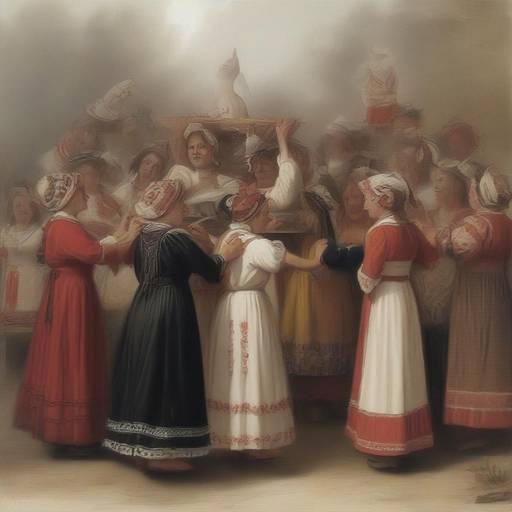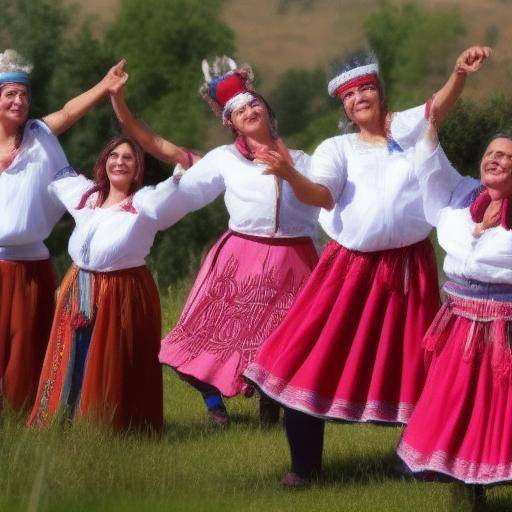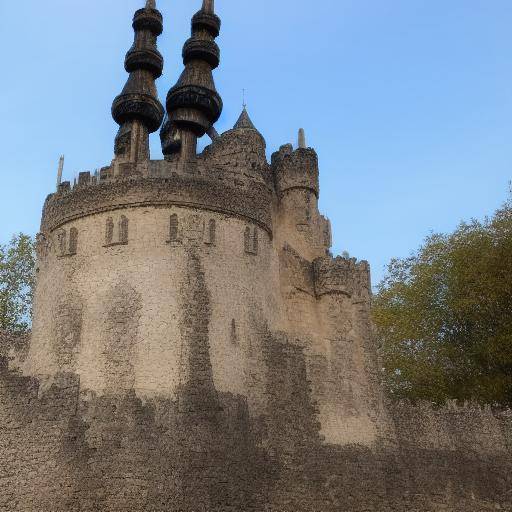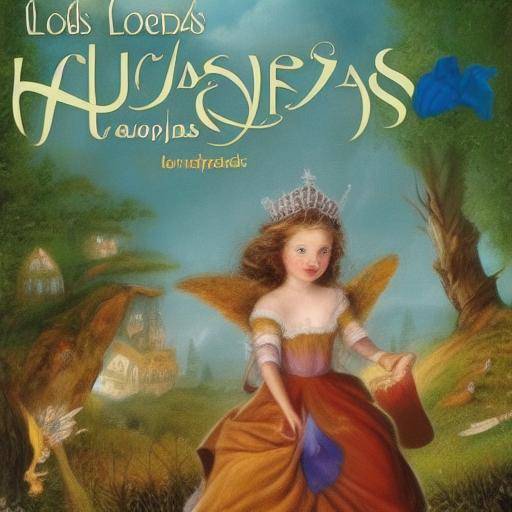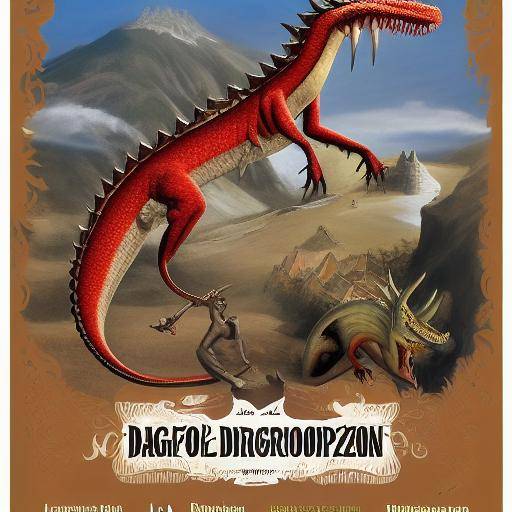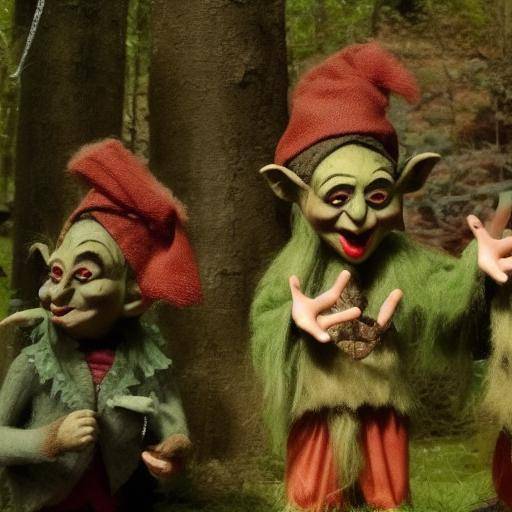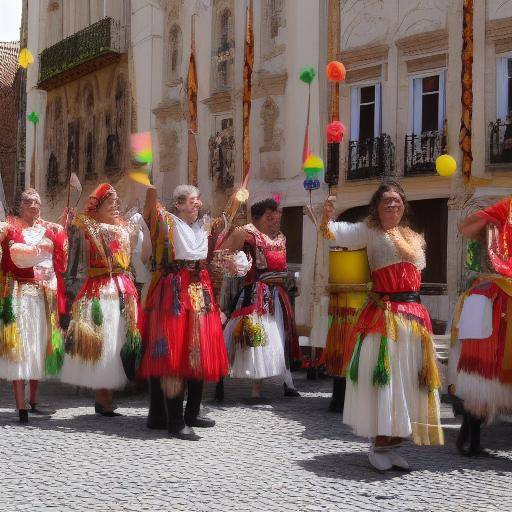
Fall in Europe is a season full of festivals and cultural events that celebrate the traditions, gastronomy and folklore of the region. From the colorful Halloween celebrations to the ancient feasts of vintage, Europe offers a rich variety of festivities that attract visitors from around the world. In this article, we will explore some of the most outstanding autumnal festivities in Europe, its deeply rooted traditions and the exciting cultural events that capture the essence of this season.
Introduction
Welcome to the wonderful world of autumnal festivities in Europe, where the magic of the season intertwines with ancient traditions and vibrant celebrations. In this complete guide, we will discover the most emblematic festivals of the European autumn, from the charming celebrations of the harvest to the impressive cultural festivities that pay homage to centuries of European legacy. Join us on this journey through the most festive corner of the continent, where the aroma of roasted chestnuts and the sound of the gaitas create a unique atmosphere that invites us to celebrate life and culture.
History and Background
Fall in Europe has witnessed numerous festivities that have their roots in millennial traditions. From the ancient Celtic festival of Samhain, which marked the end of the summer and the beginning of the new year, to the modern Halloween celebrations that have evolved over the centuries, the European autumn festivals are impregnated with history and symbolism. The rich cultural heritage of Europe is reflected in these festivities, which offer a fascinating look at the connection between people, land and their traditions.
Samhain: The Celtic Festival that gave rise to Halloween
One of the oldest festivals associated with autumn is Samhain, celebrated by the ancient Celts in what is now Ireland, the United Kingdom and parts of France. For the Celts, Samhain marked the end of the summer and the beginning of the new Celtic year, representing a moment of transition between the world of the living and the spirits. This festival included rituals such as lighting fires, offerings to the gods and ensuring protection against evil spirits. Over time, the Christian influence gave way to new traditions, and the Samhain festival became what we know today as Halloween, with its characteristic costumes, carved pumpkins and sweets.
Feast of Harvest: Celebrating the Generosity of the Earth
The harvest marks the end of the harvest season in Europe, and is celebrated with enthusiasm in many countries throughout the continent. From the majestic festivities of the vintage in France, where the parades of chariots are filled with freshly harvested grapes, to the lively celebrations in Spain, where music, dance and gastronomy occupy a central place, the feast of harvest is an expression of gratitude for the generosity of the land and the collective effort that the harvest entails.
Analysis in Deep
The autumnal holidays in Europe are not only a reminder of past traditions, but also an opportunity to reflect on their cultural, economic and social impact today.
Economic and Tourist Impact
The autumnal festivities attract a large number of tourists, resulting in a significant economic impact on local communities. The popularity of events such as the Oktoberfest in Germany or the Fiesta del Vendimia in Italy drives the local economy, generating revenue through tourism, gastronomy and the sale of artisanal products.
Influence in the Arts and Culture Pop
The autumnal festivals in Europe offer a constant inspiration for artists, writers and filmmakers, who find in these celebrations a rich treasure of stories, characters and scenarios that feed creativity and imagination. Films, novels and works of art have captured the essence and charm of these festivities, projecting to the whole world the cultural and emotional richness they enclose.
Current Challenges and Opportunities
Despite its deep cultural importance, the autumnal holidays in Europe face challenges in the modern era. The balance between preserving authentic traditions and adapting to the changing demands of society and sustainable tourism is a constant challenge. However, these celebrations also provide opportunities to promote economic development, promote cultural diversity and preserve the intangible heritage of Europe.
Comprehensive review
As a global reference in festivals, traditions and cultural events, Europe has inspired and enchanted people of all ages and backgrounds. The autumn festivals offer a diverse range of cultural experiences ranging from medieval customs to the most contemporary expressions of European creativity and folklore.
The Charm of Community Celebrations
The autumnal festivities foster social participation and cohesion, providing a space for communities to meet, share experiences and strengthen solidarity ties. From the typical parades of the Oktoberfest in Munich to popular dances in the Fiesta de San Mateo in Logroño, these festivities highlight the importance of coexistence, mutual respect and shared fun.
Conservation of Cultural Heritage
Beyond its tourist attraction, autumnal holidays play a crucial role in the preservation of European cultural heritage. The transmission of knowledge, artisanal techniques and oral traditions from one generation to another ensures the continuity of an invaluable cultural legacy, enriching collective identity and promoting a greater understanding of cultural diversity in Europe.
Comparative analysis
By comparing the autumnal festivities between the different European countries, differences and similarities are revealed that reflect the cultural wealth and diversity of traditions on the continent.
Diversity of Traditions and Customs
Each European country brings uniqueness to its autumnal festivities. While in Germany stands out the Oktoberfest with its traditional beers and music, in Spain they highlight the celebrations around the Fiesta de San Mateo, which give rise to shows of jotas, wine tasting and local gastronomy contests. In contrast, Italy celebrates La Festa dell'Uva with historical parades and wine tastings that reflect its deeply rooted winemaking tradition.
Common Elements joining Europe
Despite diversity, there are a number of common elements present in many autumnal festivities throughout Europe. The emphasis on local gastronomy, folk music and theatrical performances is a driving thread that unites the celebrations of different countries, emphasizing the importance of food, music and performing arts in European cultural identity.
Practical Tips and Recommendations
For those who wish to immerse themselves in the richness of the autumnal festivities in Europe, here are some practical tips that will guarantee an enriching and memorable experience:
- Pre-research the scheduled festivities at the destination you plan to visit, and consider participating in one of them to get an authentic view of local culture.
- Try the typical dishes of the season, such as autumn stews, roasted chestnuts or the delights of the fiestities of the harvest, which offer an exquisite sample of regional gastronomy.
- Do not miss the opportunity to explore local markets, where you will find a variety of artisanal products, from traditional textiles to ceramics and wood objects, which are perfect as unique souvenirs or gifts.
Industry Perspectives and Expert Reviews
The impact of the autumnal holidays in Europe extends beyond the borders of culture and tourism, involving various sectors and inspiring future visions. Experts in the cultural and tourist sphere share their views and projections on autumnal holidays in Europe:
María López, Historiadora del Arte
"The autumnal festivities in Europe are a vital ingredient in understanding the collective identity and cultural heritage of the continent. Beyond its tourist attraction, these celebrations serve as a vehicle for preserving and transmitting ancestral traditions, enriching the cultural heritage of Europe."
Santiago García, Expert in Sustainable Tourism
"The sustainability of autumnal festivities is a crucial aspect that must be addressed with responsibility by local authorities and event organizers. Efficient waste management, the promotion of sustainable mobility and support to local producers are key measures to ensure that these holidays are consistent with the environment and communities."
Case Studies and Practical Applications
The autumnal festivals in Europe have inspired various initiatives and projects that go beyond the festive sphere, addressing aspects such as innovation, social inclusion and sustainable development.
Project "Cultural roots": Inclusion of Ethnic Minorities in Local Celebrations
In certain regions of Europe, programmes have been implemented to encourage the participation of minority communities in local holidays, promoting the dissemination and preservation of their traditions. These programmes have generated a positive impact on social cohesion and the assessment of cultural diversity.
Future Trends and Predictions
The panorama of the autumnal festivities in Europe is constantly evolving, and there are various trends and predictions for the near future.
Digitalization of the Festive Experiences
The autumnal festivities are expected to increasingly adopt digital tools to improve the accessibility and promotion of events, offering online experiences that complement the face-to-face celebrations and reach a wider audience internationally.
Conclusion
Autumn in Europe is a magical time when autumnal festivities allow us to connect with the cultural, gastronomic, artistic and folkloric riches of the continent. From ancient Celtic traditions to the vibrant celebrations of harvest, Europe offers a wide range of festivities that celebrate the community spirit, cultural diversity and wealth of its heritage. The autumnal holidays are a reminder that traditions continue to be a source of inspiration and enrichment for both current and future generations.
Frequently asked questions
What are some of the most popular autumnal festivities in Europe?
Europe hosts a large number of popular autumnal festivities, including the Oktoberfest in Germany, the Festival of Vendimia in Italy, the Fiesta del San Mateo in Spain and the Day of All Saints in several countries.
Why is the conservation of autumnal holidays in Europe so important?
The conservation of autumnal festivities in Europe is crucial because of its role in preserving cultural heritage, promoting sustainable tourism and social cohesion.
How can I participate in the autumnal holidays in Europe as a visitor?
To participate in the autumnal festivals in Europe as a visitor, it is advisable to investigate previously the dates and locations of the scheduled events, familiarize themselves with local traditions and, if possible, engage in activities open to the participation of the public, such as parades, gastronomic tastings or folkloric representations.
What kind of typical dishes can be found during the autumnal holidays in Europe?
During the autumn holidays, it is common to find a wide variety of typical dishes that reflect the season of harvest, such as autumn stews, hunting roasts, fruit-based desserts and nuts, as well as an exquisite selection of traditional wines and liqueurs.
Do autumnal festivities in Europe influence handicrafts and local trade?
Yes, autumnal festivities tend to boost the trade in artisanal products and the promotion of local crafts, as markets and fairs associated with these celebrations offer a platform to exhibit and acquire high quality traditional products.
Do autumnal festivities take place across the European continent, or are there significant regional differences?
While there are autumnal festivities that take place in multiple European countries and share certain similarities in their traditions, there are also significant regional differences that reflect the cultural and culinary diversity of Europe.
Have the autumnal holidays in Europe evolved over time, or have they remained faithful to their historical roots?
While many autumnal festivities have evolved to adapt to new realities and demands, they still have strong links with their historical roots and maintain rituals and practices that reflect centuries of tradition and cultural significance.
How can autumnal festivities contribute to the promotion of sustainable cultural tourism in Europe?
The autumnal festivals offer a platform to promote sustainable cultural tourism by highlighting the importance of traditional practices, the conservation of heritage and the appreciation of cultural diversity, attracting travelers interested in authentic and enriching experiences.
We hope that this complete guide on the autumnal festivities in Europe has awakened its curiosity and desire to explore the rich traditions and cultural events that characterize this beautiful season on the continent!

